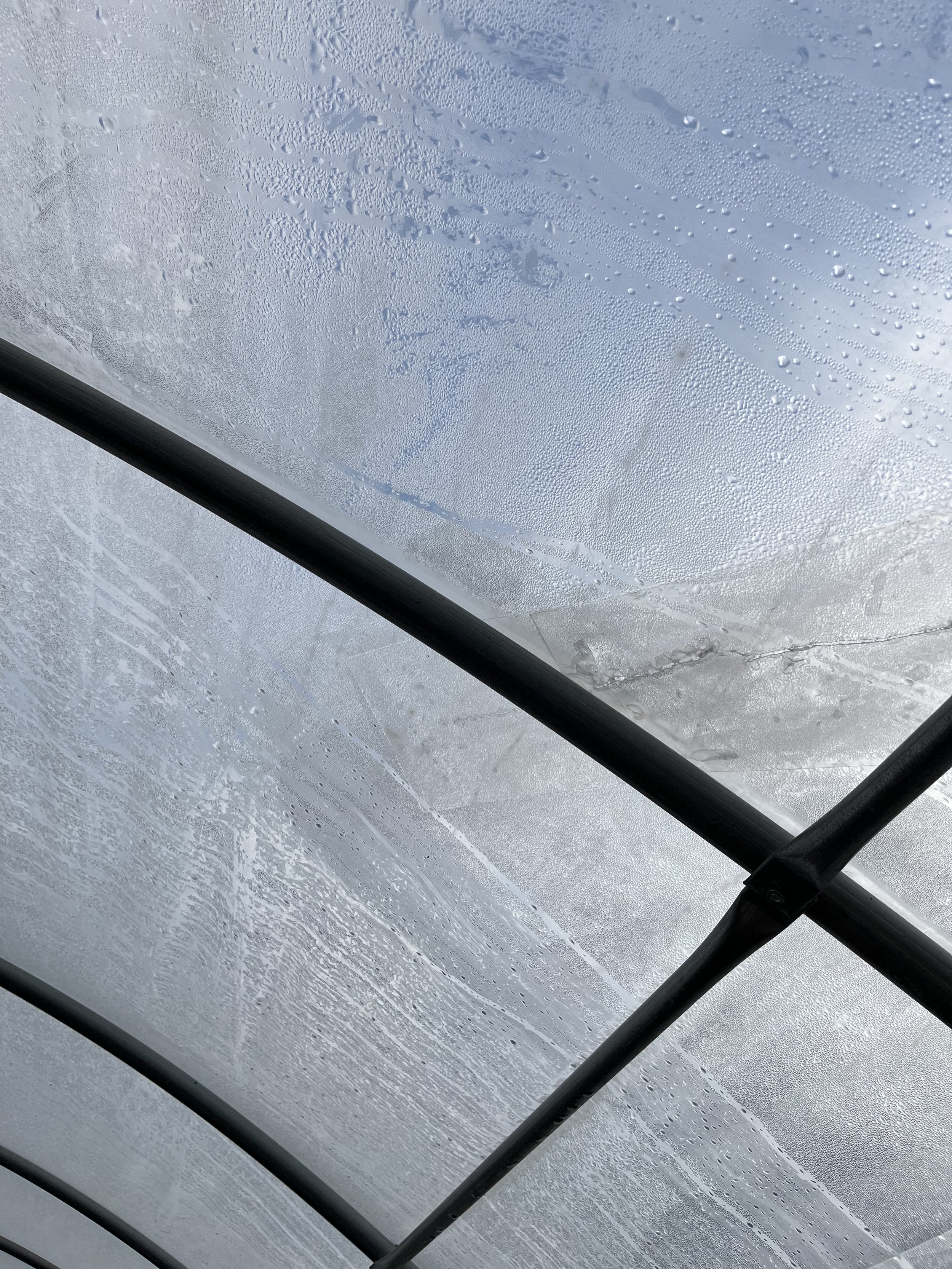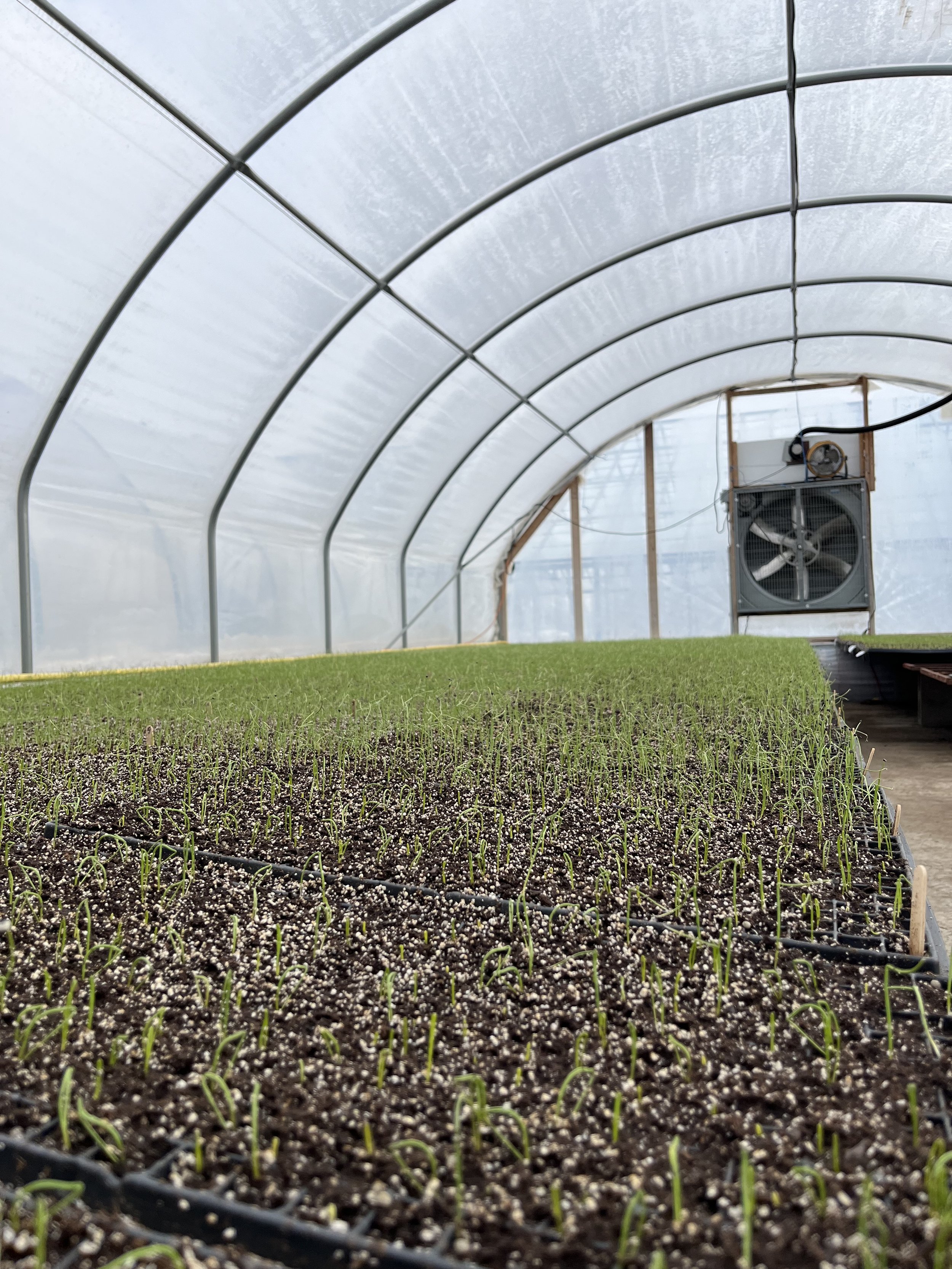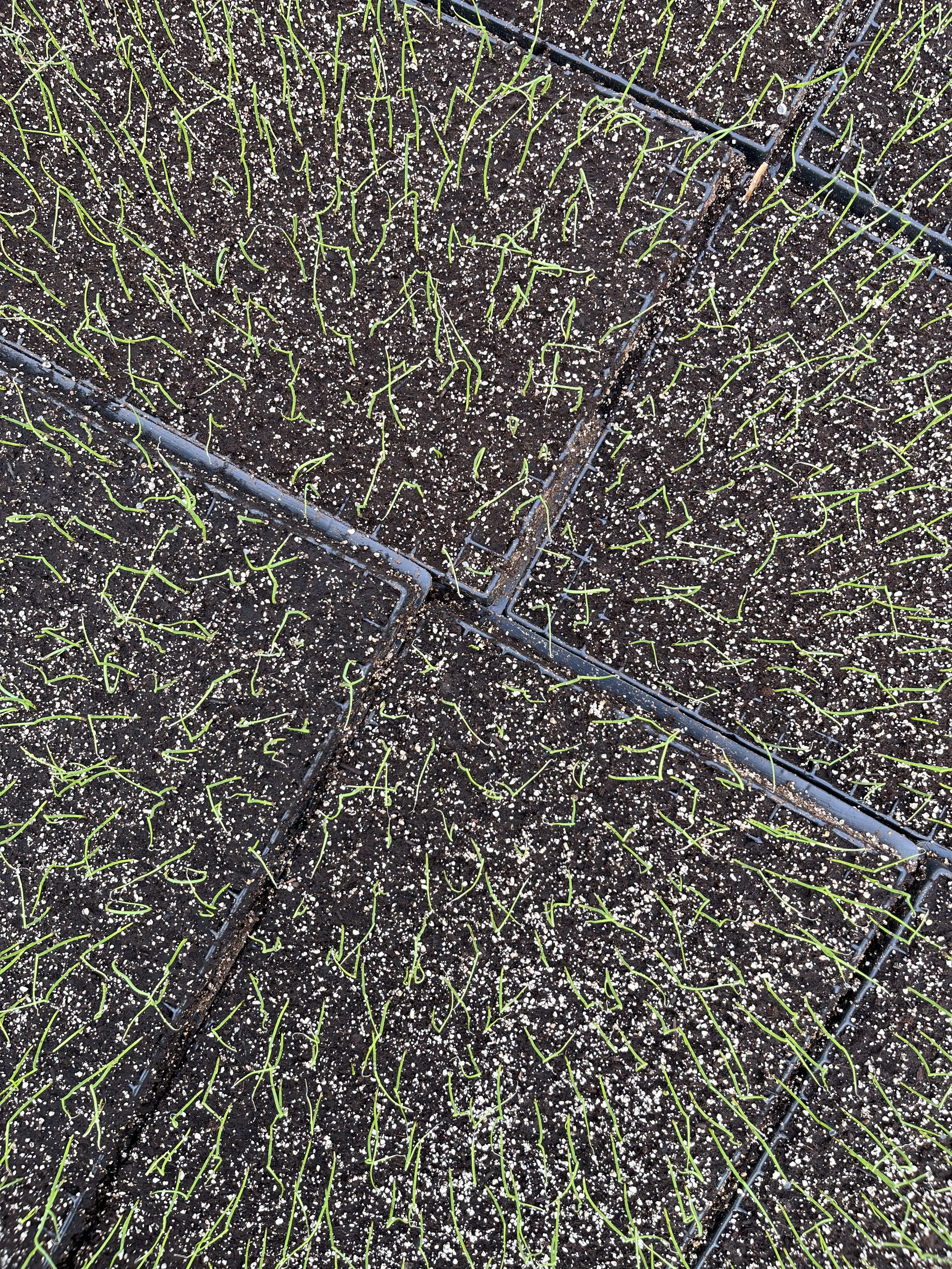We’re seeing seedlings in all directions! This is Alex writing to you, by the way — farmer, dietitian, and the one behind most of these emails & social media posts. I’ve been so excited to see these little onions popping up through the soil that I figured I’d share some of that with you and include a rare photo with me in it :)
I was away from the farm for a few days at the annual Ontario Fruit and Vegetable Convention. It’s an opportunity for folks from across the province (and in some cases the country!) who work in the horticultural field to come together and learn, explore the trade show, and connect.
My dad (Farmer Rob) joined for a couple of day as well, but had to head back a bit early. It was a good thing he did, because it turns out we had a bit of unwelcome excitement this week as well! The ice storm overnight Wednesday and into Thursday left our heated greenhouses covered with sheets of ice. As things started to shift around in the wind some of the ice broke, slid on its’ side, and cut a whole through the plastic! This let valuable heat out, and also disrupted the insulation layer — more details on that later on. Fortunately he caught it early, and was able to patch it up with help from one of our team members Gord. In the meantime, the furnace was running continuously to keep the temperature up! There are some photos below (the first two below me!), though it’s a bit hard to tell exactly where the patch is, and you may need to zoom in to get a good look. I guess that means Rob & Gord did a great job patching it up!
Last week I told you about how we monitor temperatures and humidity within the greenhouse, and I thought I’d get into a few more details this time around.
The greenhouse is heated by a small furnace, and the temperature is set to 72°F. I know we’re in Canada and typically operate in Celsius, but my dad is old-school and insists on Fahrenheit for all things on the farm, so that’s why I’m using those terms!
The large fan in the greenhouse (pictured in the first photo on the left below) is programmed to turn on once the temperature reaches 85°F. The sensor for this fan hangs from one of the bars along the top of the greenhouse. The large fan helps circulate in fresh air, and brings the temperature back down to the 72°F range.
The first year we grew our onions from seeds (this is only the third season we’ve done that, we used to purchase seedlings from a nursery) we didn’t have this system quite figured out. We had the furnace temperature set a bit higher, which meant the furnace and fan were constantly competing. We’ve found that lowering the furnace slightly gives us a better result in the end.
Another change we’ve made since Year 1 is the way we circulate the hot air. During our first go at growing onions from seed, we had a set of bag-like tunnels running below the trays of seeds, in a u-shape around the greenhouse. The hot air from the furnace blew into these bags and they inflated. The bags had holes to let the air out all along the ‘U’. The problem was, this system concentrated the heat more than we expected, and the trays right below the bag tunnels grew very quickly and also dried out very quickly. Meanwhile, the trays on either side that were further away from the bag tunnels did not grow so quickly, and the soil stayed wet for longer.
We learned from this, and made adjustments. We now rely on the large fan to circulate the air as well as a secondary fan at the opposite end of the greenhouse. This secondary fan deals more with the humidity, and basically runs continuously to keep the humidity around 60%.
Finally, in addition to the furnace, we also rely on insulation to maintain the temperature. The greenhouse is made up of a double poly-layer (aka 2 layers of plastic). In addition to sucking air into the greenhouse interior, the fan also has a pipe that blows air in between the layers of plastic, which inflates a small space between them and creates an insulating layer. This is why the ice cutting through the plastic caused such a big problem — heat was being released and the insulating layer was compromised!
Learn about our organic produce.
Although we monitor the greenhouses daily and manually check the temperatures, humidity, and moisture, as mentioned last week we also have a monitoring system installed. We input parameters, and the system lets us know if things go outside of them. For example, we are alerted via text message, phone call, and email if the temperature dips below 50°F or goes above 100°F.
Well, that’s all for now! If you made it this far, thanks so much for reading. I hope you enjoy these fun farm updates!
Blog post written and photographed by Alex Chesney, RD







